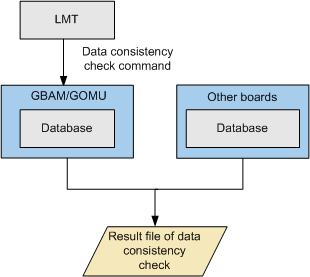The BSC data check consists of the data validity check and data consistency check.
BSC Data Validity Check
The BSC data validity check function is used to check whether configuration commands comply with the configuration rules and the related syntactic rules.
The BSC data validity check is performed on the basis of the following aspects: whether a configuration complies with the configuration rules and whether an MML script file complies with the syntactic rules. When a configuration is performed or an MML command is run, the BSC performs data validity check. If the check result shows that the configuration is incorrect or the MML command does not run properly, the BSC terminates the configuration or the running of the command. At the same time, a warning message is displayed.
BSC Data Consistency Check
The BSC data consistency check consists of the following aspects:
- Check of the data consistency between the active and standby GOMUs
If the BSC is configured with the active and standby GOMUs, the data on the active GOMU must be the same as that on the standby GOMU, thus ensuring the reliability of the BSC. If the active GOMU is faulty, the standby GOMU takes over the work of the active GOMU after an active/standby switchover.The data consistency between the active GOMU board and the standby GOMU board is guaranteed internally without the operations through the LMT.
- Check of the data consistency between the GBAM/GOMU and the other boards
If the data on a service board is inconsistent with that on the GBAM/GOMU, the system cannot run stably. In addition, some data configured on the LMT cannot take effect on the host. Figure 1 shows the procedure of the BSC data consistency check.
The procedure of the BSC data consistency check is as follows:
- You can issue a data consistency check command to the GBAM/GOMU on the LMT.
- The GBAM/GOMU analyzes the parameters of the command and checks whether the data in the board database is consistent with that in the GBAM/GOMU database.
- When the comparison is complete, the GBAM/GOMU generates a result file and sends it to the LMT.
